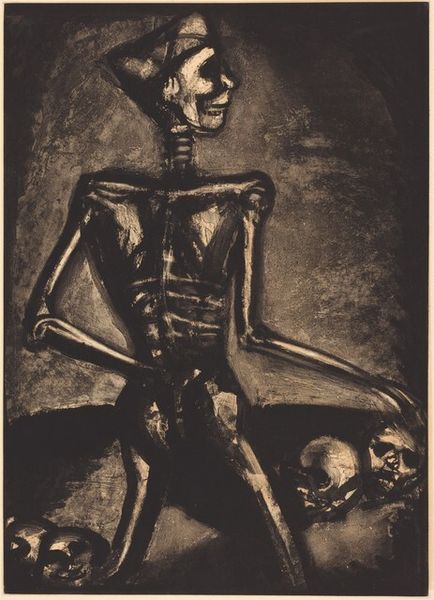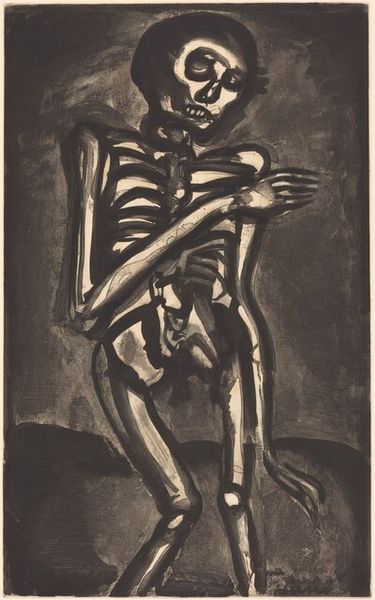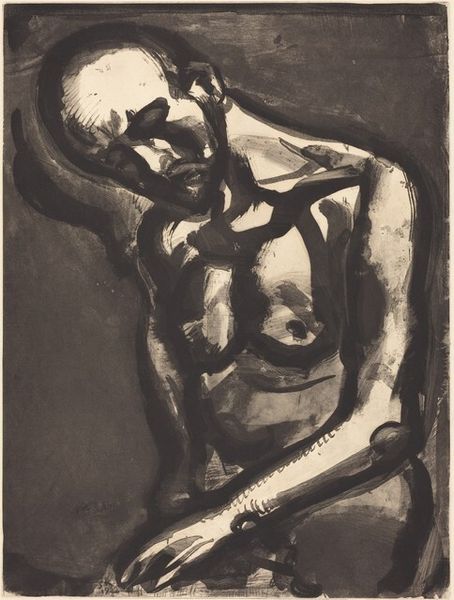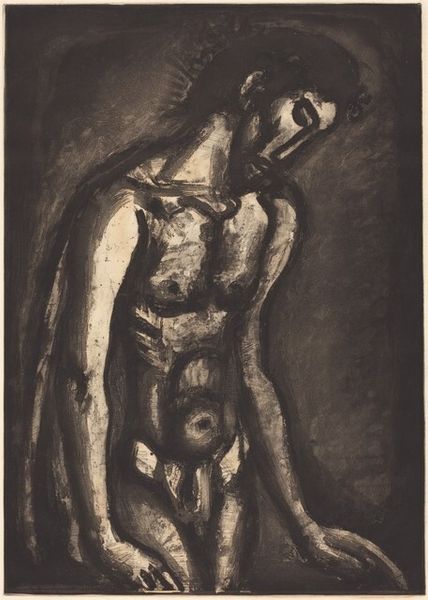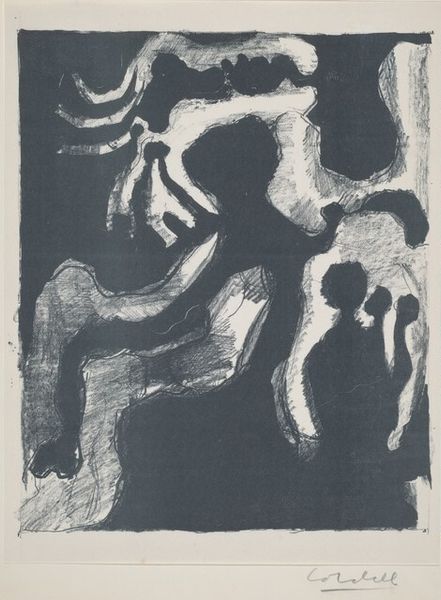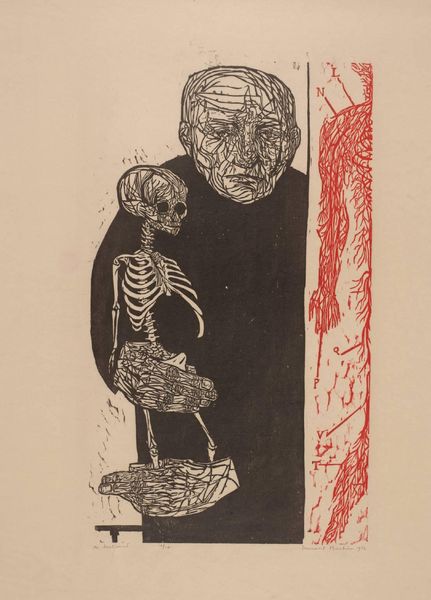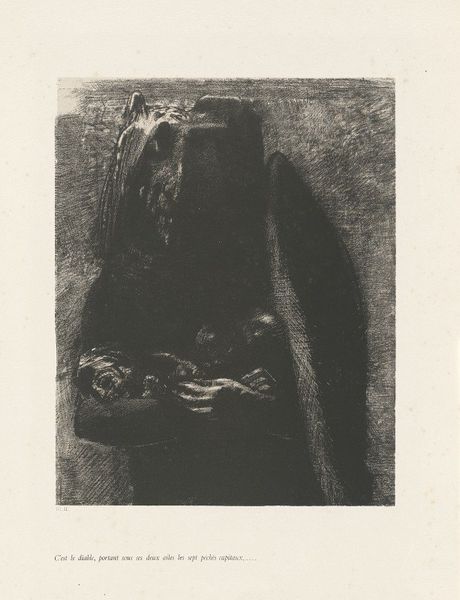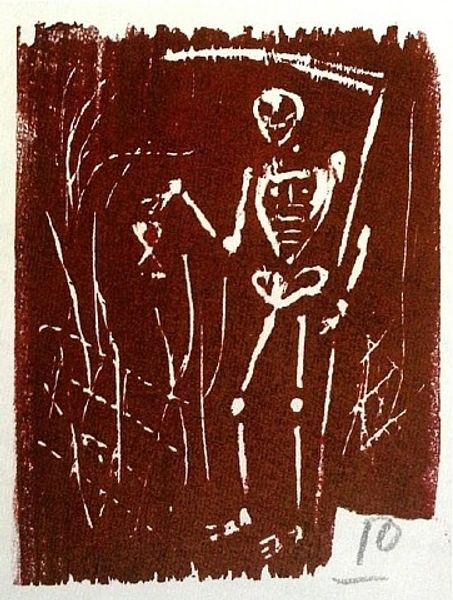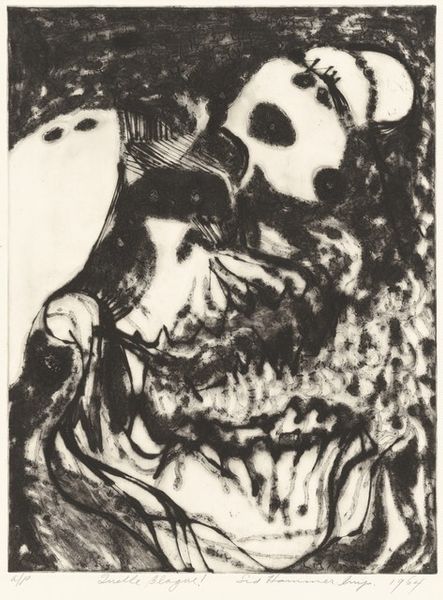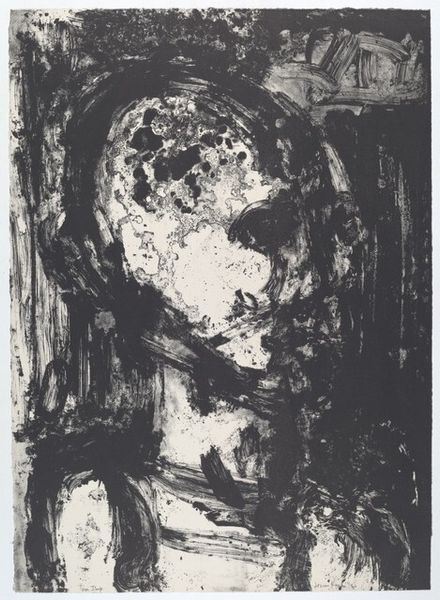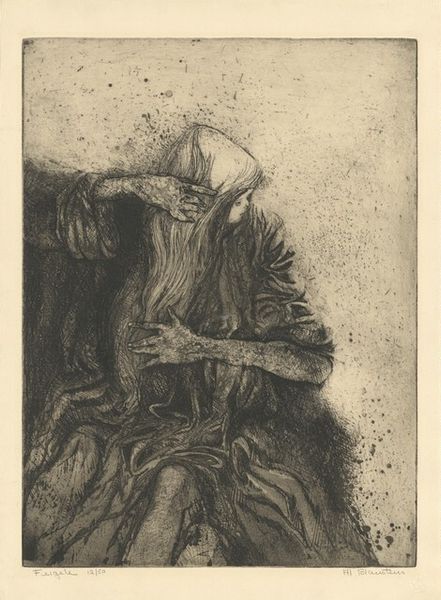
Copyright: National Gallery of Art: CC0 1.0
Editor: We’re looking at Georges Rouault’s "Squelette," an intaglio print from the mid-1920s. The somber, monochrome image shows a seated skeleton, its pose almost… thoughtful? What can you tell me about it? Curator: The material conditions of its creation speak volumes. As an intaglio print, it demands a process of labor – the gouging of lines into metal, the pressure of the press forcing ink into paper. It wasn’t easily or quickly made. This, in the context of a post-war world, isn't merely a "thoughtful" pose; it's the manifestation of societal anxieties rendered through material transformation. How do you see its place in the world between the wars? Editor: That’s interesting – thinking about it less as a macabre image and more as a result of labor. The expressionistic style feels connected to a collective trauma, like a societal confrontation with mortality… Is it referencing some historical process? Curator: Precisely. It challenges the preciousness often associated with art. This image, born from industrial processes, puts pressure on traditional distinctions. The "high art" of symbolic representation is fused with the "low art" of printmaking. Consider also the availability and consumption of prints versus unique paintings in the 1920s. Does the democratization of art through prints alter its message, and what kind of consumer engages with it? Editor: It’s making me think about the accessibility of art, and how printing allows for a wider circulation of ideas, even grim ones. Curator: Exactly. The material production influences the meaning; this image's meaning shifts according to production, distribution and the class of individuals purchasing the piece. What assumptions do you hold about how the art world operated back then, and are these images disrupting them? Editor: I hadn’t really thought about the materials themselves carrying so much significance, like an extension of the artwork's commentary. I'm realizing I was approaching it purely from an aesthetic standpoint. Curator: Seeing art as an outcome of process, materials, and social structures opens up so many ways to read its meaning.
Comments
No comments
Be the first to comment and join the conversation on the ultimate creative platform.
